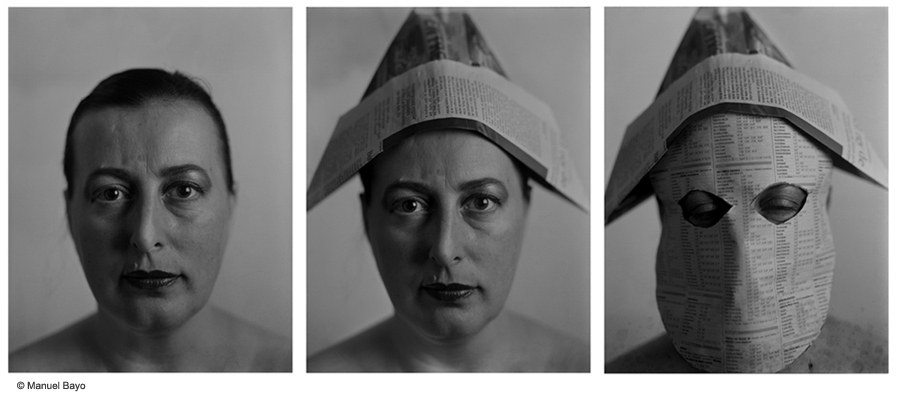Photographies of Huidobro's look
© Manuel Bayo
 Writing is the natural way to compose a chronicle, it’s our favourite tool for expressing opinión: we often give opinions by using words. Words were created and evolved not just to express themselves but also to talk about other things, to describe, define, fantasize, poetize, communicate, and, of course, to inform, misinform or even, manipulate. Words are, esencially, a way to represent something else: we use metaphors, analogies, syllogisms, riddles, lineal or multidimansional descriptions, exagerations, simplifications… words are deliverately cold or passionate, either straightforward and incisive or verbose, either false or sincere; words are squemes, a representation: mathematical, flexible and imaginative, mostly rich though seldom poor and lacking resources. Words were created to say, tell, judge, value.
Writing is the natural way to compose a chronicle, it’s our favourite tool for expressing opinión: we often give opinions by using words. Words were created and evolved not just to express themselves but also to talk about other things, to describe, define, fantasize, poetize, communicate, and, of course, to inform, misinform or even, manipulate. Words are, esencially, a way to represent something else: we use metaphors, analogies, syllogisms, riddles, lineal or multidimansional descriptions, exagerations, simplifications… words are deliverately cold or passionate, either straightforward and incisive or verbose, either false or sincere; words are squemes, a representation: mathematical, flexible and imaginative, mostly rich though seldom poor and lacking resources. Words were created to say, tell, judge, value.
How can we get over words, which are probably our most distictly human creation? Which have transformed us, helps us distinguish ourselves as individuals, in our skill to express opinions, that which best conveys our introspective nature, our depth? Writing is the best chronicler, the chronicle can hardly be separated from words. Any fact, event, speech, any beautiful or awful image provoke so many reactions as watchers and words are our best means to express such reactions, transmit them, share them and discuss them. A unique fact can easily cause as many opinions, as many written reactions as people with the will to express them. One image, one shape, one volumen, either natural or artificial, can be described, valued, criticised, it can inspire any kind of reaction and such reaction can be expressed in a thousand different ways by one thousand chroniclers. Any written word, any text, any poem… Can they be chronicled by a thousand different images that convey a thousand ways to undersand them? Of course they can!
Creating a non-written chronicle but a visual one, made with the work of 25 visual chroniclers about a unique text, about a poem by Vicente Huidobro: numerous images that compound a diverse and different map, creating an heterogeneous visual expression of a beautiful, visual text which conveys in a stunning way how the Natural Forces ─such is the name of the poem– arouse the naive curiosity of the man, who, being limited, tries to understand them. Making an equally naive, disrespectful and shameless approach due to its audacity to an inverse chronicle, a chronicle of words composed by photographies: the poetic text of a poet about Ten Glances watched by twenty-five photographers who break it into sixty-one images which hardly get together thanks to the magical symbolism of those ten short verses – this time, the chronicle is the image conveying and giving opinions about a text - . The text becomes shape and photography becomes chronicle.
This is what 1:1 proposes in its 16th issue by saving and updating a some-years-ago Project which was developed in a naive, playful way: transforming twenty-five photographers and friends into unintended chroniclers of this poem by Huidobro. Most of them found themselves as part of the chronicle without any previous notice, in better words, their pictures had been used by others (us) without them knowing in order to give each verse a visual meaning. An exercise of searching for visual coincidences between words and images previously existing on their own and that, after gathering, help us create a new visual poem beautifully described and interlaced by the great Chilean poet. Hope you all enjoy it!
